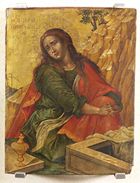On the occasion of the European Football Championship “EURO 2012”, organized in Poland and Ukraine from 8th June until 1st July, the Press Office participated in several events.
- “Cultural Week of Greeks in Poland” (Warsaw. 2-8 June 2012)
The events, that took place at “Galleria Freta” in the historical center of Warsaw, were organized by the musician of Greek origin Milo Kurtis and under the auspices of the Greek Embassy in Warsaw.
They included concerts, exhibitions of paintings, sculptures and photographs, films, classes of Greek dances, a theater performance, a debate on Greece`s current affairs, gastronomy etc.
 Several musicians, such as Milo Kurtis and “Naxos Quintet”, Kostas Georgiadis and the group “Edesea”, Apostolis Anthimos, Jorgos Skolias and “Sefardic Trio”, Maja Sikorowska, the group ‘Olympus’, several artists, such as the sculptor Christos Mandzios, the painter Michalis Chrisoulidis and the photographer Kostas Kawardzis, the film director Athena Savidis, the journalist Dionysios Sturis, the philosopher and musician Ilias Vrazas, the byzantine choir of the orthodox church of St. Mary Magdalene in Warsaw, were among those who have performed during the cultural week.
Several musicians, such as Milo Kurtis and “Naxos Quintet”, Kostas Georgiadis and the group “Edesea”, Apostolis Anthimos, Jorgos Skolias and “Sefardic Trio”, Maja Sikorowska, the group ‘Olympus’, several artists, such as the sculptor Christos Mandzios, the painter Michalis Chrisoulidis and the photographer Kostas Kawardzis, the film director Athena Savidis, the journalist Dionysios Sturis, the philosopher and musician Ilias Vrazas, the byzantine choir of the orthodox church of St. Mary Magdalene in Warsaw, were among those who have performed during the cultural week. - Greek Embassy`s event in honour of the Greek National Football Team (Warsaw, 9 June 2012)
Representatives of business, academic and artistic sectors of Greeks in Poland, Polish academics, journalists and representatives of Polish authorities, Greek journalists covering the participation of the Greek football team in “Euro 2012”, the General Secretary of Sports, Panos Bitsaxis, were among the participants. - Celebrations of Legionowo City hosting the Greek National Football Team (Legionowo, 2 June 2012)
A ceremony during which the official city-keys of Legionowo were handed over to the charge d`affaires of the Greek Embassy, Stavros Spyridakis.
- Polish Railways’ promotion of European countries during the Football Championship and for six months afterwards (May – December 2012)
For the promotion of the European Football Championship in 20 trains, Polish Railways have painted 16 of them in the colours of European countries` flags. On the 19th of May there was a parade of 5 trains painted with the colours of Greek, Polish, Ukrainian, Czech and Russian flags on a central bridge of Warsaw.
The Press Office collaborated with representatives of the Polish Railways (PKP) in order to present the Greek flag on a Polish train. - “Fan`s Dictionary” for the volunteers` communication during the European Football Championship
The dictionary includes common phrases in major European languages and was issued in cooperation with the UEFA, the EUNIC Cluster Warsaw (EU National Institutes for Culture) and the French Institute in Warsaw. The Press Office translated the leaflet into Greek language.
Filed under: Art, Bilateral relations GREECE - POLAND, Book, Business, Cinema, culture, Customs, Economy, Education, EUNIC, European Union, Food, Greece, Greeks Abroad, history, Immigration, International Relations, Literature, Media, Music, Nature, News in Greek, Photo, Poland, Politics, Science, Sport, theater, tourism | Tagged: academics, Artists, Athena Savidis, Business, Byzantine, Championship, choir, city, colours, Communication, concerts, countries, Cultural Week, culture, Current Affairs, dances, debate, dictionary, Dionisios Sturis, Economy, EUNIC Cluster Warsaw, Euro 2012, Europe, European, European countries, events, exhibitions, Fan`s Dictionary, films, Flags, Food, football, Galleria Freta, Gastronomy, Greece, Greek, Greek Embassy, Greeks, Ilias Vrazas, jourmalists, language, Languages, leaflet, Legionowo, Milo Kurtis, muicians, national, Naxos Quintet, paintings, parade, photographs, Poland, Polish, Polish Railways, Press and Communication Office in Warsaw, Press Office, Science, Sculptures, sports, team, theater, Trains, UEFA, Ukraine, volunteers, Warsaw | Comments Off on Events during the European Football Championship – Participation of the Press Office



















































 (GREEK NEWS AGENDA) A petition has been submitted in an effort to persuade
(GREEK NEWS AGENDA) A petition has been submitted in an effort to persuade  The great strength of King’s has always been that it is the only university in the UK to offer a combined programme in Byzantine and Modern Greek Studies, thus emphasising the importance of continuity through the centuries,” reads the petition which may be found at:
The great strength of King’s has always been that it is the only university in the UK to offer a combined programme in Byzantine and Modern Greek Studies, thus emphasising the importance of continuity through the centuries,” reads the petition which may be found at:
 The
The 

 Under the title “
Under the title “ The early
The early  Encompassing
Encompassing 
 (GREEK NEWS AGENDA) Culture Minister
(GREEK NEWS AGENDA) Culture Minister  (GREEK NEWS AGENDA) Angeliki E. Laiou, History Professor at
(GREEK NEWS AGENDA) Angeliki E. Laiou, History Professor at .jpg) The
The 
 In 587 A.D., a Byzantine monk named John Moschos set off from
In 587 A.D., a Byzantine monk named John Moschos set off from 
 The BBC News website hosts a five-minute video of a “
The BBC News website hosts a five-minute video of a “
















